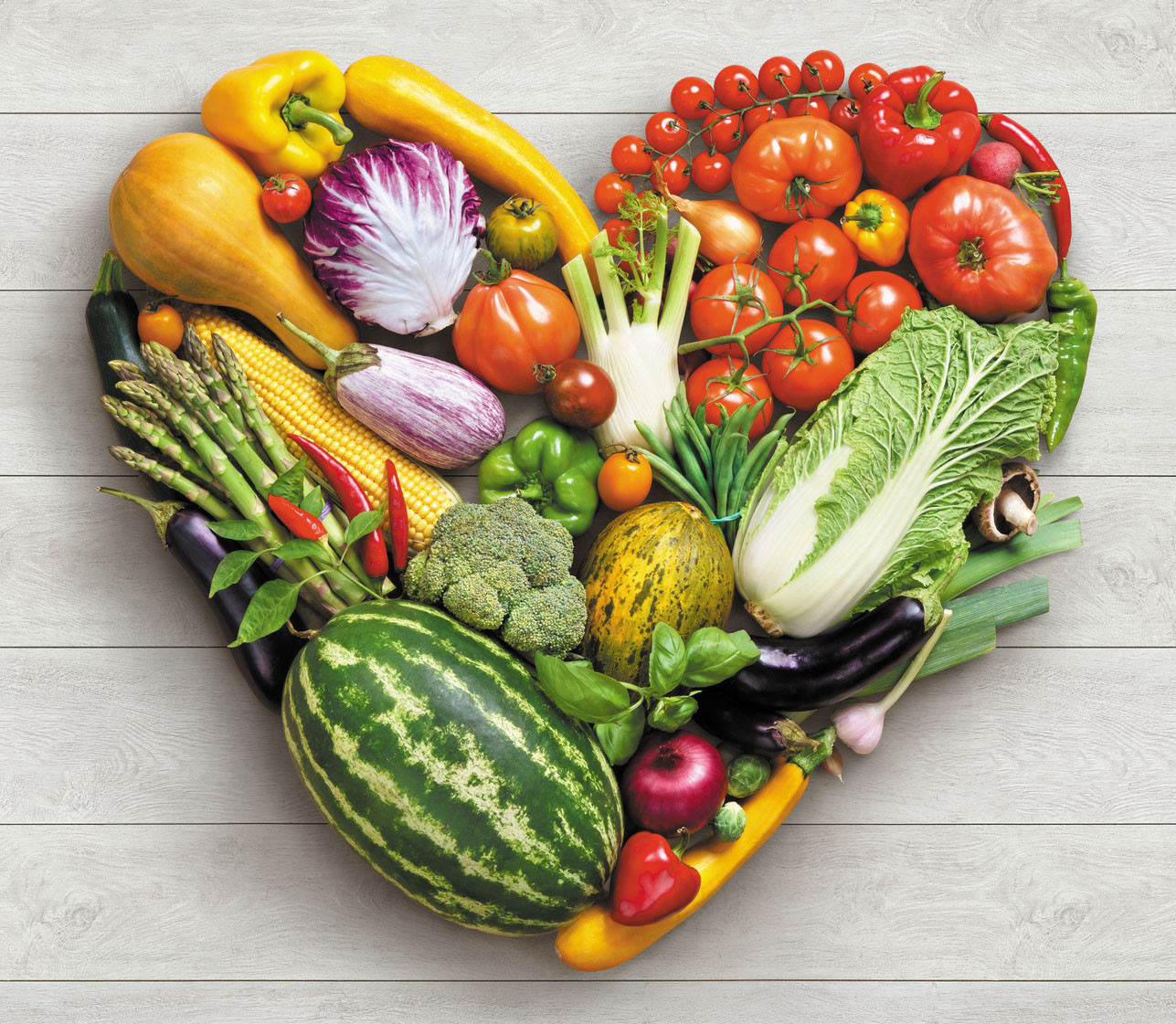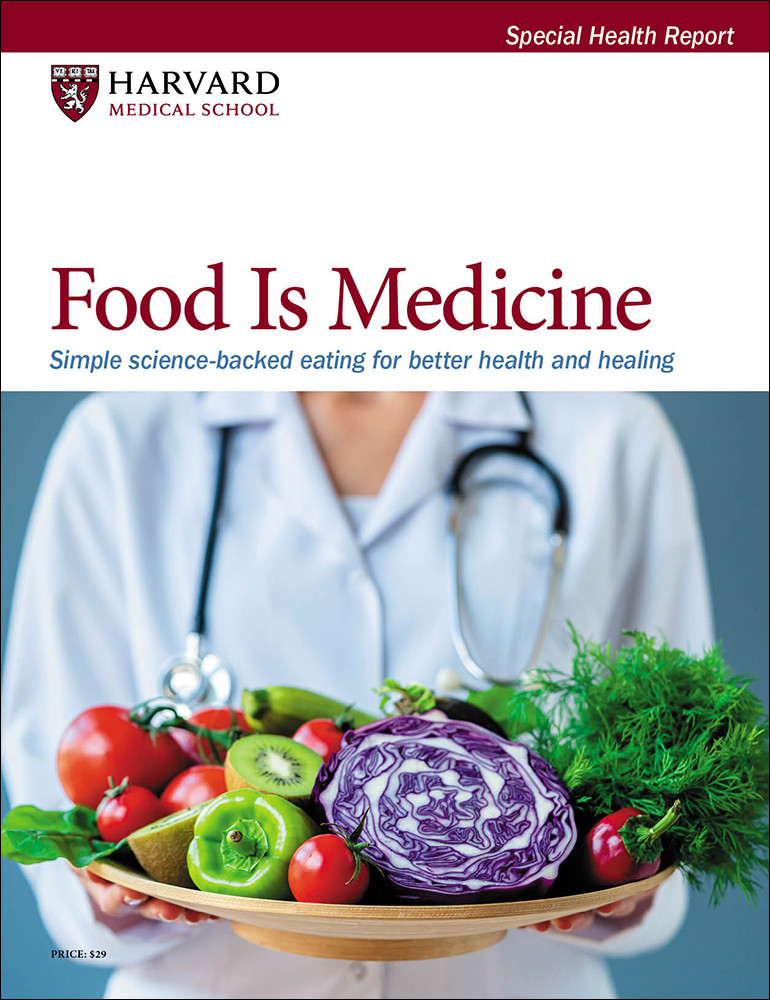
5 timeless habits for better health

What are the symptoms of prostate cancer?

Is your breakfast cereal healthy?

When pain signals an emergency: Symptoms you should never ignore

Does exercise give you energy?

Acupuncture for pain relief: How it works and what to expect

How to avoid jet lag: Tips for staying alert when you travel

Biofeedback therapy: How it works and how it can help relieve pain

Best vitamins and minerals for energy

Should you take probiotics with antibiotics?


Food Is Medicine: Simple science-backed eating for better health and healing
Decades of research confirm that our eating habits can play a major role in how cardiovascular disease, diabetes, and cancer develop…and in how we prevent, treat, and heal these diseases and many others like them. Just as important are the foods you should avoid when you live with conditions such as heart disease, GI issues, osteoporosis, kidney and liver disease, dementia, and many others.
Food is Medicine is your Harvard Medical School, evidence-based nutrition plan for living your healthiest life…for managing symptoms of chronic conditions…and for helping prevent the onset and progression of disease. And this is just the beginning of what you’ll find in this special report. Inside Food is Medicine, what you discover can change your life and your health. If you’re like so many Americans, you’re eating the wrong foods. Maybe you know it or maybe you just think you’re eating for good health, but you’re not. And you may want to eat healthily, but feel overwhelmed just thinking about it.
Other Product Information
Where do you start? What can you eat? How much and how often should you eat healthy foods? Which foods should you avoid? Count on the experts at Harvard Medical School to make it simple to get started and keep going with Food Is Medicine.
To make eating for your health and longevity even easier your special report includes the “Healthy Eating Plate” to guide you. Developed by the experts at Harvard T.H. Chan School of Public Health and Harvard Medical School, the Healthy Eating Plate helps you make the healthiest choices within the major food groups—vegetables, fruits, whole grains, and proteins. There’s even a handy illustration to show you how much of your plate each of these foods should take up.
You’ll get the straight facts about which fats, proteins, and carbohydrates are your best defenders against disease. Learn the difference between whole grains and whole-grain foods, legumes, and healthy proteins. Find out which superfoods should always be at the top of your grocery list…how diet is connected to mood and mental health disorders such as depression…how to nourish the microbiome in your digestive tract…and which diet is linked to better health and longevity.
Prepared by the editors of Harvard Health Publishing in consultation with Beth Frates, MD, Associate Professor, Part-Time, Physical Medicine and Rehabilitation, Harvard Medical School, and Meghan Ariagno, MBA, RD, LDN, Program Director, Bariatric Surgery, Center for Weight Management, General GI Surgery, Brigham and Women’s Hospital. 45 Pages. (2025).
How do foods nourish your body?
Nourishing your body begins, of course, with eating—a process of breaking down foods into smaller and smaller bits and moving them through your digestive tract (also known as your gut). First, you chew and swallow your food; then, it’s broken down further by enzymes in the stomach. Next, it passes into the small and large intestines, where nutrients and water are absorbed and waste is eventually excreted.
But your gut isn’t just a food passageway. It’s sometimes called a second brain, because it contains a huge network of nerves that communicate with the brain as well as with your immune and nervous systems. It’s also home to trillions of species of bacteria, fungi, and other microorganisms—a flourishing ecosystem known as the gut microbiome.
The “good” bacteria in your microbiome are essential for many processes that keep you healthy. They break down nutrients to make them more absorbable and help destroy harmful organisms that could make you sick. They also make nutrients on their own. For example, some gut microorganisms produce vitamin K, an essential factor in blood clotting.
Gut bacteria also ferment fiber into short-chain fatty acids, such as acetate, propionate, and butyrate. These short-chain fatty acids are anti-inflammatory compounds involved in managing blood sugar and cholesterol, bolstering immunity, and other processes. In fact, emerging science suggests that a healthy, diverse microbiome may help prevent or manage chronic diseases like inflammatory bowel disease, diabetes, heart disease, and cancer—and it can also support better brain health.
Eating a variety of plant foods—particularly fruits, vegetables, beans, whole grains, nuts, and seeds—helps your microbiome thrive. These foods supply plenty of fiber—a main fuel for those beneficial microbes. Eating a wide range of plant foods helps ensure a diversity of gut microbes, too.
The role of probiotics and prebiotics. You can boost your microbiome by regularly eating aged and fermented foods like yogurt, sauerkraut, kombucha, and kimchi. These foods are rich in probiotics—beneficial microorganisms that support and add to the microbial populations already in your gut. Probiotic supplements are another option, but they can be pricey—and they’re limited to just the bacterial species listed on the label. By getting your probiotics from foods, you’ll ensure you get a wide range of naturally occurring beneficial bugs.
Another way to support a healthy microbiome is to focus on foods rich in prebiotics—compounds that feed gut bacteria. Some of the most well-known prebiotics are inulin (found in foods such as leeks, asparagus, chicory root, garlic, and wheat) and resistant starches (in beans, peas, plantains, and potatoes). Prebiotics are also available in supplements and added to some foods. But keep in mind that simply eating a fiber-rich diet that includes plenty of plant foods will go a long way toward keeping your gut bacteria well fed.
- Why food is medicine
- How do nutrients keep us healthy?
- How do foods nourish your body?
- How does food cause—or calm—unhealthy inflammation?
- A healthy bounty of foods
- The Harvard Healthy Eating Plate
- Fruits and vegetables: The foundation of healthy eating
- Why eat whole grains and whole-grain foods?
- Should you choose organic over conventional produce?
- What are legumes?
- What are healthy proteins?
- What to consider when choosing animal proteins
- What are healthy fats?
- Dairy and nondairy alternatives
- How to read food labels
- Foods to limit or avoid
- Nutrition prescriptions for common conditions
- Heart health
- Diabetes
- Cancer
- Understanding the glycemic index and glycemic load
- Gut health
- Bone health
- Kidney health
- Cognitive health
- Mental health
- SPECIAL SECTION: Applying the food-is-medicine approach to your life
- Take small steps
- Make cooking from scratch easier
- Shop and save: Healthy eating for less
- Make the most of mealtime
- Resources

5 timeless habits for better health

What are the symptoms of prostate cancer?

Is your breakfast cereal healthy?

When pain signals an emergency: Symptoms you should never ignore

Does exercise give you energy?

Acupuncture for pain relief: How it works and what to expect

How to avoid jet lag: Tips for staying alert when you travel

Biofeedback therapy: How it works and how it can help relieve pain

Best vitamins and minerals for energy

Should you take probiotics with antibiotics?
Free Healthbeat Signup
Get the latest in health news delivered to your inbox!
Sign Up